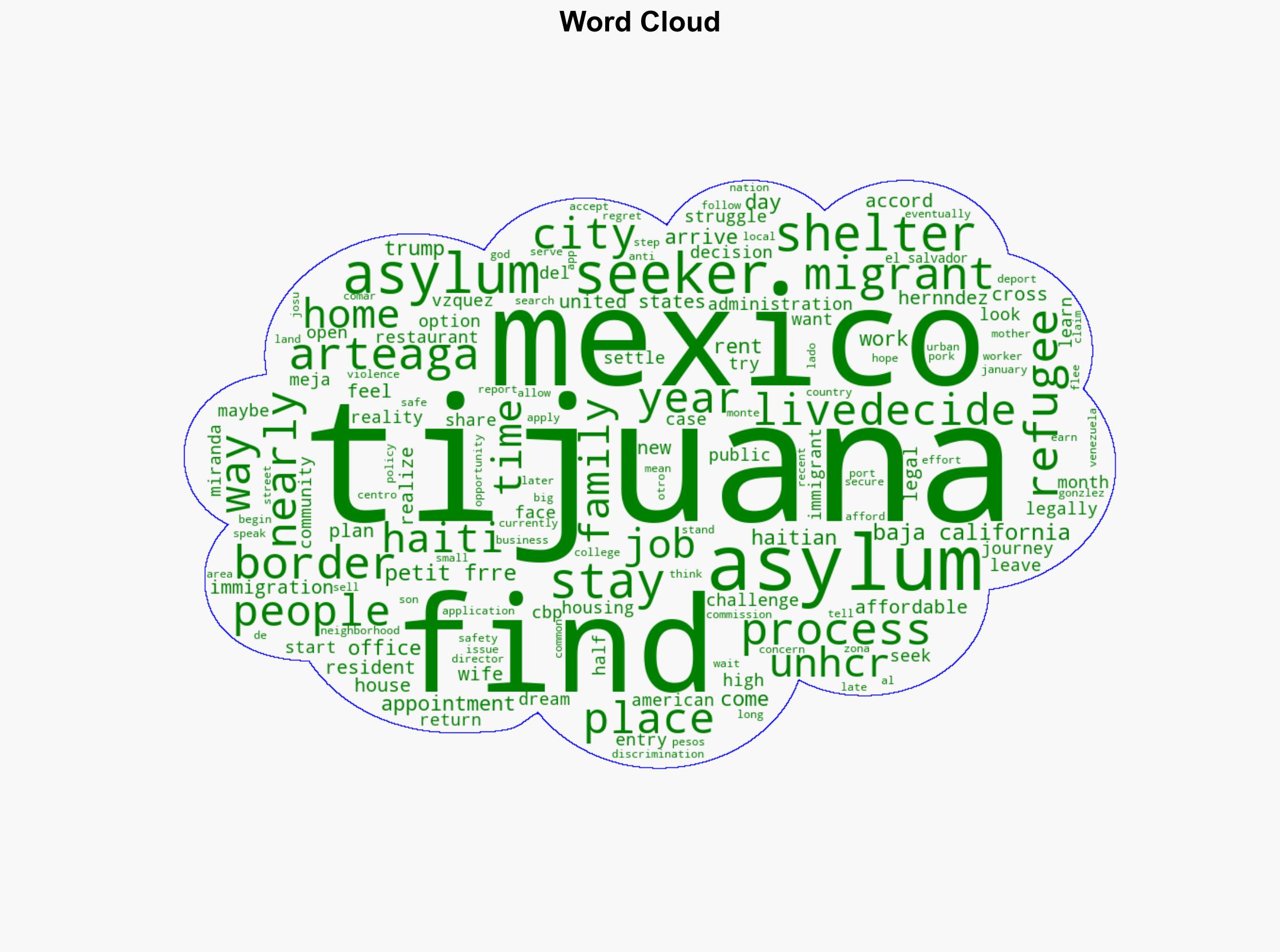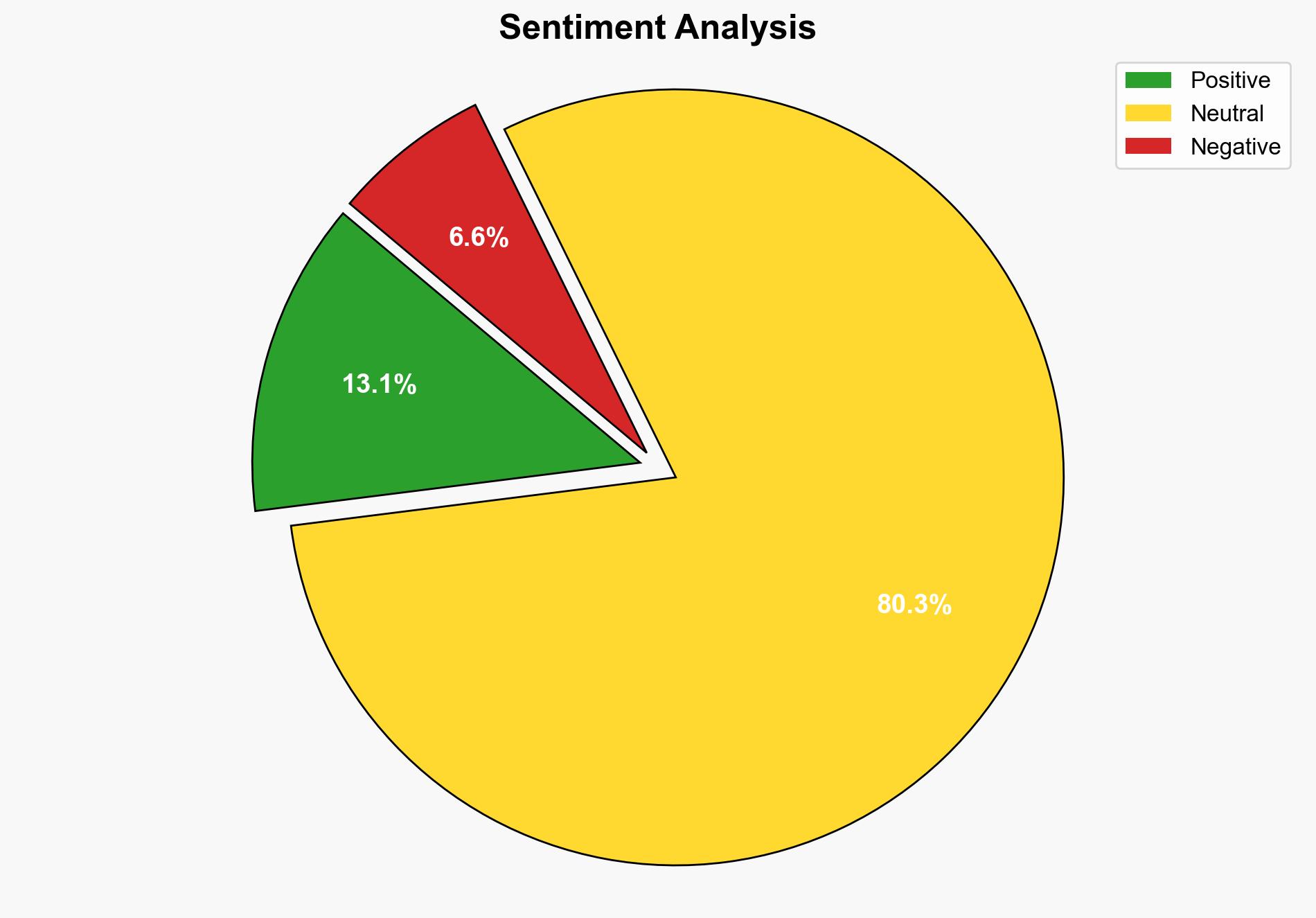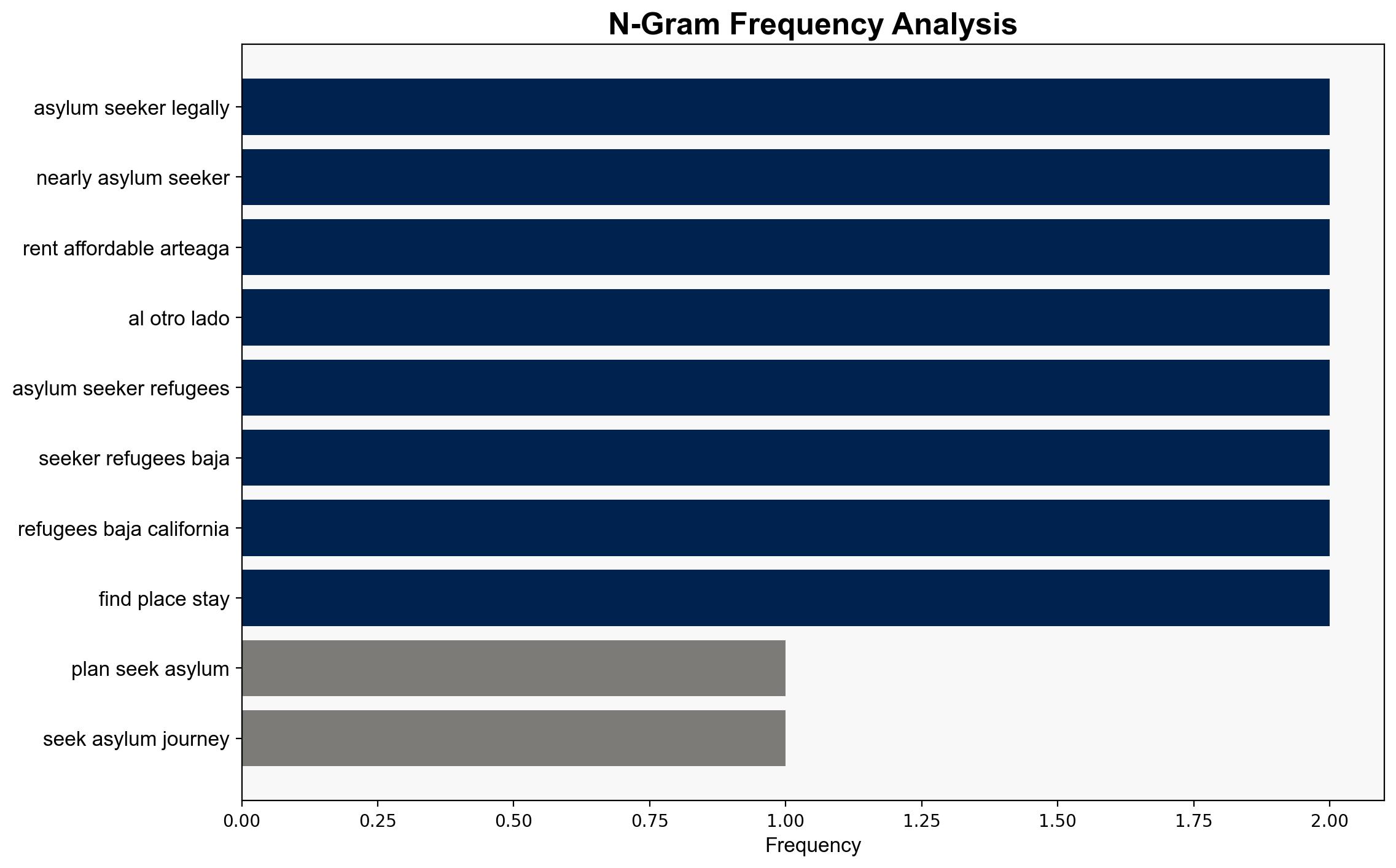What if we stay in Mexico With chances in the US dashed migrants make new lives south of border – Boston Herald
Published on: 2025-07-15
Intelligence Report: What if we stay in Mexico With chances in the US dashed migrants make new lives south of border – Boston Herald
1. BLUF (Bottom Line Up Front)
Migrants facing restrictive U.S. immigration policies are increasingly opting to settle in Mexico, particularly in border cities like Tijuana. The shift is driven by prolonged asylum processing times and economic opportunities in Mexico. This trend may influence regional stability and economic dynamics, necessitating strategic adjustments by both Mexican and U.S. authorities.
2. Detailed Analysis
The following structured analytic techniques have been applied to ensure methodological consistency:
Causal Layered Analysis (CLA)
Surface events reveal a growing number of migrants settling in Mexico due to U.S. policy barriers. Systemic structures include Mexico’s legal framework for asylum seekers and economic conditions. Worldviews are shaped by perceptions of safety and opportunity in Mexico versus the U.S. Myths revolve around the American dream and its attainability.
Cross-Impact Simulation
The influx of migrants into Mexico may strain local resources, impacting housing and employment markets. This could lead to increased cooperation or tension between Mexico and the U.S. on immigration policies.
Scenario Generation
Scenarios range from successful integration of migrants into Mexican society, enhancing economic growth, to potential social unrest due to resource competition and xenophobia.
Network Influence Mapping
Key influencers include local government officials, migrant advocacy groups, and international organizations like the UNHCR. Their interactions shape policy responses and public sentiment.
3. Implications and Strategic Risks
The settlement of migrants in Mexico poses risks such as increased crime rates and social tensions. Economically, it could lead to labor market shifts. Politically, it may alter bilateral relations with the U.S. and affect regional security dynamics.
4. Recommendations and Outlook
- Enhance cross-border cooperation to manage migrant flows and improve asylum processing efficiency.
- Invest in local infrastructure and social services in Mexican border cities to support integration.
- Scenario-based projections suggest that in the best case, migrants contribute positively to local economies; in the worst case, social tensions escalate; most likely, a mixed outcome with both challenges and opportunities.
5. Key Individuals and Entities
Wilver Arteaga, Dagmara Mejía, Soraya Vázquez, Juan Antonio del Monte, José Hernández.
6. Thematic Tags
migration trends, U.S.-Mexico relations, border security, economic integration, social dynamics




